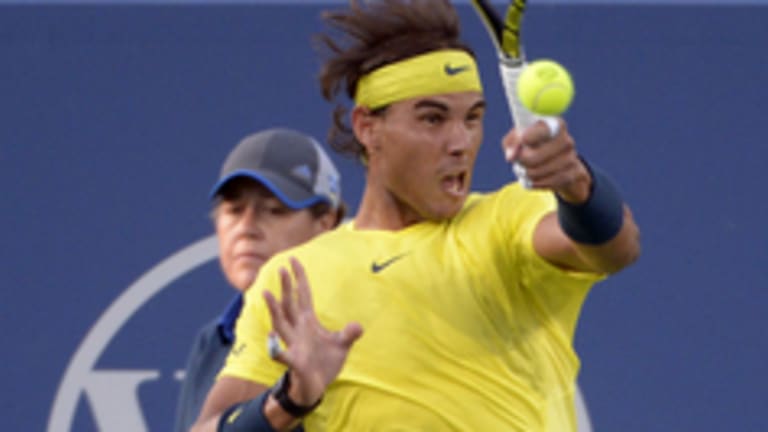What are the four major issues in tennis as we approach the fourth and final major of the season? The Grand Stories, written by Steve Tignor and Peter Bodo:
**Monday, August 19: Serena's Strengths vs. Serena's Struggles
Tuesday, August 20: The Summer of Rafa
Wednesday, August 21: Bryan Brothers Seek Slam
Friday, August 23: The Open's Economic Issues**
Last week, on his way to the title in Cincinnati, Rafael Nadal was asked what he had done differently on hard courts to help him go undefeated on the surface so far in 2013. He joked that his secret to avoiding defeat had been to play just two tournaments on it so far this year.
On the one hand, Rafa was right; a couple of titles over the course of five months doesn’t make anyone the king of any surface. Nadal has even spent much of the last year talking about how he wishes there were fewer events on hard courts, which he believes do bad things to his already well-worn knees. On the other hand, Nadal knows that these weren’t just any old hard-court events. His victories have come at Indian Wells, Montreal, and Cincinnati, all of them Masters tournaments, all of them stacked with the best competition available. As Rafa said yesterday, these aren’t tune-up tournaments; they’re prestigious titles in their own right.
Nadal has been so good on hard courts, and so good overall in 2013, that he has to be considered a slight favorite for the U.S. Open title. That’s not something many of us thought we’d be saying at the start of the season, or again after his early departure at Wimbledon two months ago. But since then Nadal has become just the fourth player since the 1990s to complete the elusive and fatiguing summer hard-court double. The other three were Andre Agassi in 1995, Patrick Rafter in 1998, and Andy Roddick in 2003. If their history is a guide, Nadal should indeed be the favorite at the Open. Both Roddick and Rafter went on to win at Flushing Meadows, and Agassi would have done the same if he hadn’t run into his version of kryptonite, Pete Sampras, in the final in ’95.
Nadal’s personal history is also on his side. Every year for the last nine years he has dominated the lead-up to the French Open, and every year but one he has capped that run with a title in Paris. Nadal has always been a binge winner, and a momentum player, so much so that he used the positive energy from his clay season to push him all the way to the Wimbledon final, on a different surface, five times in a row starting in 2006.
Still, this is uncharted territory for Rafa. He had never won Cincinnati before; hence his dramatically joyous celebration dive yesterday. And he hadn’t won in Canada since 2008. Even in 2010, the year of his lone U.S. Open title, Nadal kept a fairly low profile at these two tournaments, going out before the finals before shifting into high gear in New York. Just a few months ago, there was speculation that Nadal might skip all hard-court events in the future. With that in mind, his 2013 performance on the surface must feel like a fabulous bonus. It must also feel like an opportunity. The Open is back within his grasp.
